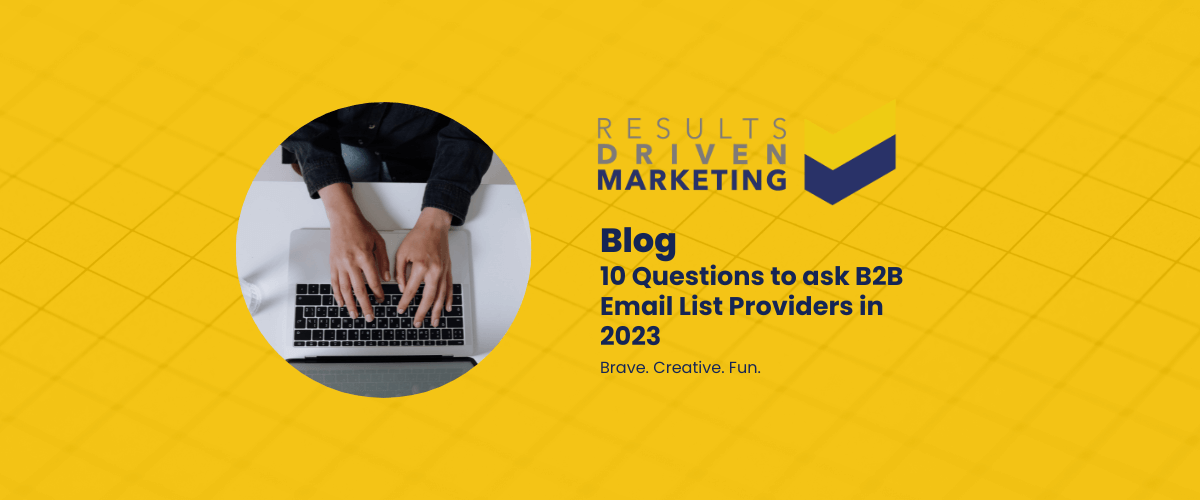
10 Questions to ask B2B Email List Providers in 2023
In today’s fast-paced business world, finding the right B2B email list provider is akin to discovering a goldmine for your marketing strategies. As we step into 2023, the landscape of digital marketing continues to evolve, making it more crucial than ever to ask the right questions when choosing a provider.
This article delves into the top 10 questions you should be asking B2B email list providers, ensuring that your choice not only aligns with your company’s needs but also addresses those nagging pain points effectively.
From understanding the quality and relevance of the data to ensuring compliance with privacy laws, these questions are designed to guide you through the maze of options available. We understand that sifting through countless providers can be overwhelming, but fear not!
Our insights will empower you to make an informed decision, one that will bolster your marketing efforts and drive your business forward. So, let’s dive in and explore these essential queries that will set you on the path to email marketing success.
We were discussing our competitors this morning in a team meeting and came to the conclusion that for all there are more and more b2b email list providers springing up every day, that in actual fact, given the quality of the information we supply, we actually have very few true competitors.
For those that don’t know, b2b email list providers come in all shapes and sizes and make money by supplying b2b email marketing lists to end-user clients for use on their in-house email marketing campaigns.
They also supply to marketing intermediaries who will either use the bought b2b email data on client campaigns or refer the supplier to their clients to work with directly.
Table of contents:
Different types of B2B Email List Providers
List owners
List owners compile b2b email lists using various feeds and then sell that information either directly to end-user clients or resellers and brokers.
It is their responsibility to cleanse, check and verify the information that they supply on an ongoing basis and perform all quality and legality checks including CTPS screening and GDPR compliance.
List brokers and resellers
List brokers work directly with end user clients and marketing intermediaries to search the market to find b2b email data for them that will match a set criterion.
They usually have relationships with several b2b email list owners and will negotiate a discount with them, which is where they find their margin.
List resellers usually work with one b2b email list owner and work with end user clients and marketing intermediaries alike.
They will work with you to understand your campaign needs and the put together a bespoke solution based on them.
The benefit of working with a b2b email list reseller is that they usually have a contract in place with a b2b email list owner which sees them buy b2b email data in bulk at a much lower rate and as smaller out fits, they pass those savings on to their clients.
Just because you are a b2b email list owner, doesn’t mean you are a good one and likewise just because a broker will tell you that they can supply from anyone, doesn’t mean that they have relationships with good list owners.
Equally, a reseller might be able to offer cheaper b2b email lists but what good are they if they too are contracted to a poor b2b email list owner?
Working this out needn’t be difficult if you ask the following 10 questions of a potential b2b email list providers.
1. Are you a List Owner, Broker or Reseller?
As we have touched on already, this is really the key starting point to ascertain exactly who you are dealing with and where their b2b email data comes from.
Understanding where the potential supplier sits within the industry will help you decide whether or not they are a company you want to work with or not.
As a reseller ourselves, we sometimes are approached by clients that eventually decide to go with a list owner because they feel that that is the route they want to go down.
It really doesn’t necessarily benefit them because they get the same product and usually pay more for it.
What is important to understand here, is that this is just the first question.
There are good and bad owners, brokers and resellers, but it is always a good to know who you are dealing with and why they operate in the way that they do.
Now that we know who we are dealing with it’s a good time to start examining where the b2b email lists they supply come from.
2. Where exactly does your B2B Email Data come from?
If you are working with a list owner, you need to ask them which feeds they are using to compile their master file and what processes they have in place to not only maintain the accuracy but also the quality and legality of the b2b email data that they supply.
List owners that are not supplying very good b2b email data will often be quite vague at this point and often give pretty vague answers.
If you are working with a broker, you will probably go through a b2b email data selection process before they present a potential supplier to you. At that point you really need to still be asking this question of the proposed supplier.
OK, so you can get us b2b email lists from this company, at this price, great. Where is their data from? What feeds are they using? Processes etc.
Results Driven Marketing are totally transparent with our clients and where our b2b email lists are sourced.
We work with the UK’s leading data aggregator, who take the very best parts of the top five data houses to compile their master file of over 3.25 million records.
Those data houses being – 118 information, Dun and Bradstreet, Companies House, Corpdata and Thomson Directories.
3. What GDPR compliance checks are done on your B2B Email Lists?
The EU General Data Protection Regulation (GDPR) is the most significant piece of European privacy legislation in the last twenty years. It came into direct force on 25th May 2018.
GDPR replaces the 1995 EU Data Protection Directive (European Directive 95/46/EC), strengthening the rights that EU individuals have over their data, and creating a uniform data protection law across Europe.
Brexit will not affect the new regulation as the Secretary of State for the Department of Culture Media and Sport confirmed GDPR will be enforceable from 25th May 2018.
The GDPR applies to organisations processing and holding personal data within the EU. It also applies to organisations outside the EU that offer goods or services to individuals in the EU.
Personal data means any information that can be used to directly or indirectly identify the person.
This could be anything from a name, computer IP address, bank details or location data.
Depending on the severity of non-compliance, companies can expect to be fined up to 2% of annual global turnover or €10 million (whichever is highest) for failing to comply with GDPR.
For more serious data breaches, companies can be fined up to 4% of annual global turnover or €20 million. Importantly these rules now apply to both controllers and processors.
Privacy and Electronics Communications Regulations (PECR)
Email marketing is currently governed by the Privacy and Electronics Communications Regulations (PECR).
GDPR still applies as it covers the processing of personal data in a general sense (note PECR is due to be replaced by the ePrivacy Regulation but this has been delayed and is very likely not to happen until the end of this year at the earliest).
Confusion often arises over the meaning of B2B marketing in relation to email campaigns. In an email environment, B2B marketing does not include sole traders and partnerships.
You need to gain consent for your organisation and your products/services in order to email sole traders and partnerships, as these are treated in the same way as consumers.
Be very careful not to get caught out by this when licensing third party data by making sure your supplier is only providing emails for B2B marketing.
4. What do we do if we get a GDPR complaint about B2B Email Data?
Most suppliers at the point of supplying you a b2b email list will wash their hands of anything coming back the other way.
You need to ensure you will work with a supplier that will support you if you do have queries coming back from recipients.
We offer a 12-month service which covers this absolutely free of charge.
If you have someone respond to a campaign you have run and makes a complaint that isn’t based on any missing information you haven’t included in your campaign, like the option to unsubscribe, we will simply ask you to send them our way and we will deal with them directly.
5. What Accuracy Guarantees does your B2B Purchased Email List data come with?
Accuracy guarantees are commonly provided by b2b email lists suppliers. These outline the basic levels at which they expect their b2b email databases to perform, and should they fail will offer you recourse.
We have seen accuracy guarantees ranging from 80%-100% on hard bounces, but I would be wary of any companies offering close to 100% accuracy because email data, more than any other, decays rapidly and all reputable suppliers understand that they will never be able to supply a b2b email list that is 100% accurate.
The same applies for companies that are offering an accuracy guarantee that is very low, like 80%. Losing 20% of a b2b purchased email list is a lot to stomach for anyone.
The levels of accuracy guarantee offered vary from supplier to supplier for a b2b purchased email list.
Make sure you get the response to this question and the following question in writing as by way of evidence should you have any issues with the final product you are delivered for the b2b purchased email list.
6. What happens if a Large Number of the B2B Email Data provided bounce?
So, moving on from the actual guarantees a supplier will offer, you need to be aware of what happens if they don’t meet those minimum benchmarks.
At Results Driven Marketing, we like to keep things simple:
- 98% postal address accuracy guarantee
- 90% telephone number and contact name accuracy guarantee
- 90% email address accuracy guarantee
Should we fall below any of the above minimum benchmarks, we offer like for like replacements, or if they are not available, a pro-rata refund.
All you need to do, is show us an email bounce report that shows a higher than 10% hard bounce rate and we will give you your money back on anything over it.
This gives our clients total peace of mind when purchasing a b2b email list from us.
These are the sort of ‘set in stone’ assurances you need from a potential supplier in writing.
7. What Process do you go through to ensure your B2B Email Data is right for me?
A good b2b email lists supplier will have clear process that they take each client through. B2B email databases selection is a regular, repeatable process whereby certain questions need to be asked of a client, every single time.
The b2b email database selection process should cover:
Geography – where are your targets located. Most b2b email list suppliers should be able to select your targets based on town, county, postcodes (great if you can provide a list), country, region i.e. South, North East etc.
A good tool that we have is the ability to run a radius search. We can ask what is the furthest you are able to travel to service a client.
Sectors – a lot of b2b email list suppliers can only run sector counts based on SIC (Standard Industry Classification) codes.
These can be a little bit ambiguous so it’s a good idea to work with a b2b email list provider that can also search by LOB (lines of business)
Size of organisation – sometimes your products and services are only suited to certain sizes of company.
A good example of this would be if you supply HR software, it unlikely you want to target companies with 2 members of staff.
To help you identify larger organisations, you can filter your b2b email database by number of employees and company turnover.
What else?
Legal entities – some companies might only want to target LTD’s, PLC’s or LLP’s.
Number of branches – this is really helpful for companies that are looking to target multi-site organisations.
Financial information – some b2b email databases may not have this information available, but many will be able to select by profit and loss, profit change, net worth, sales increase/decrease.
Suppression – a b2b email list provider should be asking you if you have b2b email databases in house already that you would like to suppress against this count. It saves you buying information that you already own.
Types of contacts – this is one of the most crucial parts of the selection process.
Most b2b email list providers will be able to offer extensive options on the types of job titles and job roles they have for you to select from.
Channels – Do you would just require and email address or would it also be helpful if you have a telephone number on the record as well for following up with email campaign engagements.
Here at Results Driven Marketing we have a clearly defined and proven 7-step data selection process which we take each client through to ensure the b2b email databases we supply matches their target markets precisely.
8. Can I see a sample of your B2B Email Data?
The answer to this question should always be, yes, of course!
Unfortunately, that isn’t always the answer you get when asking a b2b email list supplier for a sample.
It is essential to get a sample of the proposed b2b email list to see exactly what levels of information are included and how it is laid out.
You need to be clear about exactly what it is you can expect to receive and what format it is delivered in, so that you know what you will need to do to the file to get in a format that will work with any crm systems of email platforms you use.
Some b2b email list providers with try and swerve this and instead offer you a file of column headers which are no use to anyone because they give no real indication of what you can expect to receive.
9. Can I have a breakdown of the B2B Email data you are Proposing?
This is a great question because it tests how hard a b2b email list provider is willing to work to make you feel comfortable about working with them and winning your business.
Providing breakdowns for clients is an additional step and can take some time.
If you are getting the feeling that the proposed b2b email list supplier isn’t keen on doing this, alarm bells should be ringing about their abilities.
You can ask for the proposed count to be broken down by most of the selection criteria we went through in question 7, but key ones are to check the proposed industry sectors and job titles.
This way you can check make sure nothing has crept in that you were not expecting before you take ownership of the final product.
10. What are the Licence terms provided on your B2B Email Data?
Different suppliers offer b2b email lists on different licences with the most common being a 12-month, multi-use.
However, other licences are available on b2b email lists, and they do have an impact on how much you pay, so you are really wise to check exactly what terms of usage are being set out by the supplier.
The last thing you want to happen, is to plan to run an email campaign over a period of months only to find that you have a single use-licence.
We believe these to be the fundamental questions to ask of a b2b email list supplier.
You will know if you are working with a good supplier if they answer most, if not all of these without you having to actually ask them in the first place.
The Best B2B Email List Providers for 2023
In the ever-evolving world of B2B marketing, staying ahead of the curve is paramount. One of the most sought-after tools in this realm? The B2B email list. But with so many providers out there, how do you choose the right one for your business?
Why should you use B2B email lists?
The digital age has ushered in a plethora of marketing strategies, but few have stood the test of time quite like email marketing. Here’s why incorporating a b2b email list into your strategy is a no-brainer:
Precision Targeting: With a b2b email lists at your fingertips, you can target specific industries, job roles, and even company sizes. This means your message gets in front of the eyes that matter.
Cost-Effective: Compared to other marketing strategies, using a b2b email list is relatively inexpensive. Plus, with the right email providers list, you’re ensuring a high ROI.
Strengthen Customer Relationships: Regular communication through email helps nurture and strengthen relationships with your existing customers. A well-maintained b2b email database ensures you’re always in touch.
Expand Your Reach: A b2b contact list allows you to reach out to potential clients you might not have had access to otherwise. It’s all about expanding your horizons and tapping into new markets.
Measurable Results: One of the beauties of b2b email marketing is the ability to measure results. From open rates to click-through rates, you can gauge the effectiveness of your campaigns and adjust accordingly.

Where can you buy a B2B Email List?
If you’re convinced about the power of b2b email lists, the next logical question is, where do you get one? The market is flooded with options, but here’s a step-by-step approach to ensure you’re making the right choice:
Research for B2B Email Lists: Start by searching for top b2b email databases providers. Look for those with positive reviews and testimonials about B2B email lists.
Ask for Samples for B2B Email Lists: Before you commit, ask for a sample of the b2b email list. This gives you a sneak peek into the quality of the list you’re purchasing.
Check for Updates for B2B Email Lists: A good b2b email list provider will regularly update their lists. This ensures you’re always reaching out to valid and current contacts.
Consider the Cost for B2B Email Lists: While you shouldn’t skimp on quality, ensure the email lists b2b provider you choose offers competitive pricing.
Understand the Source for B2B Email Lists: It’s crucial to know where the purchased email list comes from. Ensure the provider uses legitimate means to gather their data.
Customisation Options for B2B Email Lists: Every business is unique. Opt for providers that allow you to customise your b2b email marketing list based on your specific needs.
Remember, the right b2b email list can be a game-changer for your business. So, invest the time and effort to choose wisely.

What is the best B2B Email List Provider?
With so many providers out there, each claiming to be the best, how do you sift through the noise? Well, the answer isn’t as straightforward as you might think.
The best b2b email list provider for your business might not be the best for another. It all boils down to your specific needs. However, here are a few hallmarks of a top-notch provider:
- Comprehensive Data: The provider should offer a b2b email database that’s not just vast but also varied, catering to multiple industries and regions.
- Regular Updates: The world of b2b email lists is ever-changing. A good provider ensures their list is always fresh, updating it regularly.
- Transparency: Where did the data come from? How was it sourced? A reputable provider will be transparent about their b2b email databases sourcing methods.
- Customer Support: Whether you’re a newbie or a seasoned pro, questions can arise. The best providers have experts on hand to assist you every step of the way.
B2B Email Marketing Lists
Diving into the world of b2b email marketing? Then you’ll need a robust marketing list. But not all lists are created equal. Here’s what to look for:
- Segmentation: A good email providers list will allow you to segment based on various criteria, ensuring your message reaches the right audience.
- Clean Data: Bounced emails? Ain’t nobody got time for that! Ensure your provider offers clean, verified data.
- Compliance: In today’s digital age, compliance is key. Your chosen provider should offer GDPR compliant b2b contact lists.
Buy B2B Email Marketing Lists – Quality Business Data
When it comes to b2b email marketing, quality trumps quantity every time. Sure, a vast database sounds impressive, but if the data is outdated or irrelevant, it’s of no use. So, when you’re in the market for a purchased email list, prioritize quality. Look for providers that:
- Verify Data: This ensures that the purchased email list is are still active and relevant.
- Offer Customisation: Your business is unique, and so are your needs. The best providers allow you to tailor your b2b email list accordingly.
- Provide Support: Whether it’s setting up your campaign or analysing results, having experts on hand can be invaluable.
Target your ideal customers
Every business has its ideal customer. And with the right b2b email list, reaching them becomes a whole lot easier. Here’s how:
- Define Your Audience: Before you even start, have a clear picture of who you’re trying to reach. This will guide your b2b email marketing efforts.
- Segment Your List: Don’t send the same email to everyone. Segment your list based on criteria like industry, job role, or company size.
- Personalise Your Message: With a segmented list, you can tailor your message to resonate with each group. This increases engagement and, ultimately, conversions.
Experts on hand
Navigating the world of email lists b2b can be daunting. But with the right experts by your side, it becomes a breeze. Whether you need help choosing the right list, setting up your campaign, or analysing results, having seasoned professionals on hand can make all the difference. So, when choosing a provider, ensure they offer not just a list, but also the support to make your campaign a roaring success.
Why choose a Results Driven Marketing List?
In the bustling arena of b2b email marketing, it’s not just about having a list; it’s about having the right list. And when it comes to delivering results, not all lists are crafted equally. So, why should you put your trust in a Results Driven Marketing marketing list? Let’s delve a bit deeper, shall we?
Delivering the Highest of Standards for your B2B Email Marketing Campaigns
In the world of b2b email databases, quality is paramount. And at Results Driven Marketing, we pride ourselves on setting the bar high. Every single contact in our b2b email list undergoes rigorous checks to ensure they meet our exacting standards. It’s not just about quantity for us; it’s about delivering a list that truly adds value to your B2B email marketing campaigns.
Over 95% accuracy for your Email Marketing Campaign using your purchased email list.
Accuracy matters. Think about it. What’s the use of a vast b2b contact list if half the emails bounce back? It’s not just frustrating; it’s a waste of your precious resources. That’s why our email lists b2b boast an impressive accuracy rate of over 95%. So, you can send out your campaigns with confidence, knowing they’ll reach the intended recipients for your email marketing campaign.
GDPR compliant data
In today’s digital age, data protection is more important than ever. And with GDPR regulations in place, it’s crucial to ensure your b2b email marketing efforts are compliant. With our GDPR compliant data, you can rest easy knowing you’re on the right side of the law. We take data protection seriously, and our lists reflect that commitment.
The mailing lists experts
Navigating the world of purchased email lists b2b can be a tad overwhelming. But fear not! Our team of experts is here to guide you every step of the way. With years of experience under their belts, they know the ins and outs of b2b email marketing like the back of their hand. From choosing the right list to optimising your campaigns, they’ve got you covered for your purchased email list.
Demystifying data
Data can be… well, a bit mystifying. But it doesn’t have to be. Our aim is to make b2b email databases accessible and understandable for everyone, regardless of their level of expertise. We break down the jargon, offer insights, and provide actionable tips to ensure you’re making the most of your list. After all, knowledge is power, right?
Marketing Data
Ah, marketing data. It’s the lifeblood of any successful b2b email marketing campaign. But let’s be honest, not all data is created equal. In the vast ocean of b2b email databases, how do you ensure you’re fishing in the right waters? Here’s the thing: it’s all about quality, relevance, and, of course, freshness.
- Quality Over Quantity: A massive b2b email list might sound impressive, but if it’s filled with outdated or irrelevant contacts, it’s not doing you any favors. Always prioritise quality over sheer volume.
- Relevance is Key: What good is a b2b contact list if it doesn’t align with your target audience? Ensure your email lists b2b are tailored to your specific industry, region, and target demographic.
- Freshness Matters: The digital landscape is ever-evolving. People change jobs, companies merge, and businesses pivot. That’s why it’s crucial to have a b2b email database that’s regularly updated.
Pricing
When it comes to purchasing an email list, it’s easy to get swayed by bargain deals. But remember, you often get what you pay for. While it’s essential to ensure you’re getting value for money, it’s equally crucial to ensure you’re not compromising on quality. Here are a few things to keep in mind:
- Transparent Pricing: No one likes hidden costs. Opt for email providers list that offers clear, upfront pricing without any nasty surprises when purchasing an email list.
- Customisation Options: Sometimes, a one-size-fits-all approach just won’t cut it. Look for providers that allow you to customise your b2b email list based on your specific needs, often without a hefty price tag.
- Bulk Discounts: If you’re looking to purchase a large b2b email database, check if the provider offers bulk discounts. It can lead to significant savings in the long run.
Corporate Contacts
Navigating the corporate world can be a bit… tricky. But with the right b2b email list, you can reach the decision-makers that matter. Whether you’re targeting CEOs, CFOs, or middle management, a tailored b2b contact list can be a game-changer. Remember:
- Segmentation is Your Friend: Don’t send the same email to a CEO and a marketing manager. Segment your list to ensure your message resonates with the recipient.
- Personalisation Goes a Long Way: A generic email is easy to ignore. But one that speaks directly to the recipient? That’s gold. Use your b2b email database to craft personalised messages that hit the mark.
Our B2B email database is updated on an ongoing basis
In the fast-paced world of digital marketing, yesterday’s data is old news. That’s why our b2b email databases are continuously updated. We understand the importance of fresh, accurate data, and we’re committed to providing our clients with the best. From new startups to industry stalwarts, our database captures them all.
So, when you choose our b2b email list, you’re not just getting a list; you’re getting a constantly evolving resource that keeps pace with the ever-changing business landscape.
Accurate Purchased B2B Email List
Let’s face it, in the vast realm of b2b email marketing, accuracy is everything. I mean, what’s the point of sending out a beautifully crafted email if it ends up in the wrong inbox, or worse, no inbox at all? That’s where accurate purchased email lists come into play. Here’s the scoop:
- Reduced Bounce Rates: An accurate b2b email list ensures that your emails reach their intended recipients, reducing those pesky bounce rates.
- Better Engagement: When your emails land in the right inboxes, you’re more likely to see higher open and click-through rates. It’s all about reaching the right audience with the right message.
- ROI Boost: With an accurate b2b email database, every email sent has a higher chance of converting, giving you more bang for your buck.
Organise Your Emails when emailing to the B2B email list
Organisation isn’t just for your office desk or your wardrobe; it’s crucial for your b2b email lists too. Think about it. A well-organised email list can streamline your campaigns, making them more effective and efficient. Here’s how to get started when emailing to the B2B email list:
- Segmentation: Group your b2b contact list based on criteria like industry, job role, or company size. This allows for more targeted campaigns for your purchased email list.
- Regular Clean-Up: Regularly prune your b2b email databases to remove outdated or irrelevant contacts. It keeps your B2B email list fresh and relevant.
- Use Tags: Tagging contacts based on their behaviour or preferences can offer invaluable insights for future campaigns when emailing to the B2B email lists.
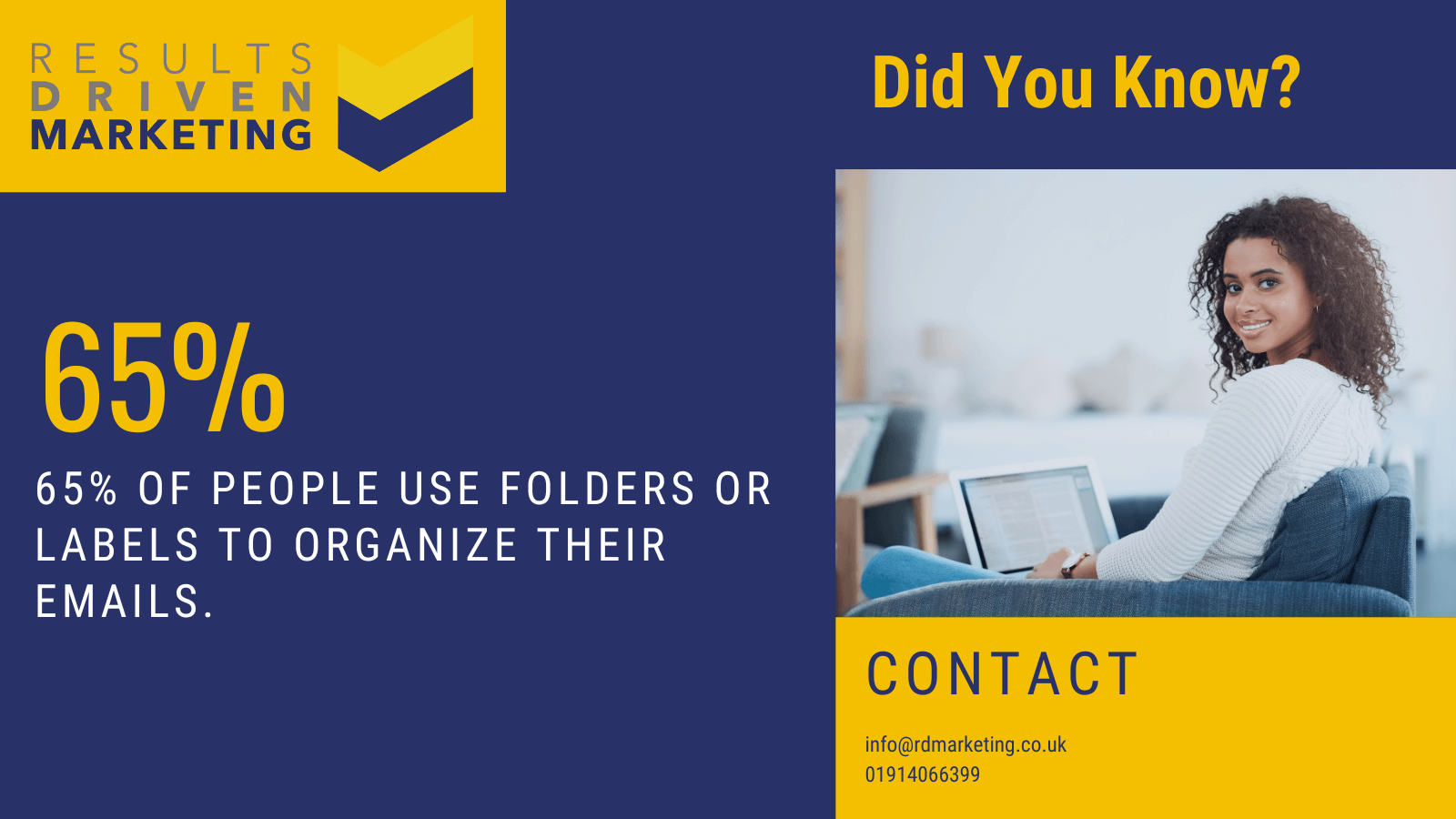
B2B Email lists
In the digital age, while emails reign supreme, there’s still a place for traditional mailing lists. A well-curated B2B mailing list can complement your digital efforts, offering a tangible touchpoint with potential clients. Here’s the lowdown:
- Tangible Touchpoint: In a world of digital overload, a physical mail can stand out, making a lasting impression.
- Personal Touch: Sending a personalised mail, perhaps with a handwritten note, can add a personal touch that emails often lack.
- Complements Digital Efforts: Use your b2b email marketing campaigns to complement your mailing efforts, creating a cohesive brand experience.
Buy B2B Email Lists
Ready to dive into the world of b2b email marketing? The first step is to buy a b2b email list. But with so many options out there, how do you choose? Here’s a step-by-step guide:
- Research: Start by researching top b2b email databases providers. Look for those with stellar reviews and testimonials.
- Ask for Samples: Before you commit, ask for a sample. It gives you a taste of what’s on offer.
- Check for Regular Updates: The best providers regularly update their lists, ensuring you’re always reaching out to valid contacts.
- Ensure Compliance: In today’s world, data compliance is crucial. Ensure your chosen provider offers GDPR compliant lists.
B2B Mailing List that fits your business needs
Every business is unique, with its own set of challenges and goals. So, why settle for a one-size-fits-all mailing list? Instead, opt for a b2b email list that’s tailored to fit your specific business needs.
Whether you’re targeting a niche industry or a specific region, the right list can make all the difference. Remember, it’s not about having the biggest list; it’s about having the right list. So, take the time to choose wisely, and watch your b2b email marketing efforts soar.
List Building when emailing to the B2B email list
It’s kind of like constructing a house, brick by brick. But instead of bricks, you’re using valuable contacts that can propel your b2b email marketing efforts to new heights. So, how do you go about building a robust b2b email list? Let’s break it down:
- Start with Your Current Contacts: You might already have a goldmine of contacts in your current database. Begin by segmenting and organising these into a cohesive b2b email database.
- Engage on Social Media: Platforms like LinkedIn can be a treasure trove for b2b contact list building. Engage, connect, and grow your list organically.
- Offer Value: Whether it’s a valuable eBook, a webinar, or a discount, offering something in return can entice potential contacts to join your email lists b2b.
- Stay Compliant: Remember, building a list is not just about quantity. Ensure you’re adhering to GDPR regulations and only adding contacts who’ve given their consent.
Data Appending when emailing to the B2B email list
Ever felt like your b2b email databases are, well, a bit incomplete? Enter data appending. It’s like giving your database a much-needed makeover, filling in the gaps, and ensuring you have the most up-to-date information. Here’s the gist:
- Fill in the Gaps: Data appending can help you add missing information to your existing contacts, be it email addresses, phone numbers, or job titles.
- Stay Updated: Industries evolve, people change jobs, and companies merge. Data appending ensures your b2b email list reflects these changes.
- Enhance Segmentation: With a more complete database, you can segment your list more effectively, leading to more targeted and successful b2b email marketing campaigns.
Custom Data when emailing to the B2B Email list
In the world of b2b email marketing, customisation is king. After all, why settle for a generic list when you can have one tailored to your specific needs? Custom data offers just that. Here’s why it’s a game-changer:
- Tailored to Your Needs: Whether you’re targeting a specific industry, region, or company size, custom data ensures your b2b email list aligns with your goals.
- Higher Engagement: A customised list means more relevant contacts, leading to higher open and click-through rates.
- Better ROI: With a list that’s tailored to your needs, you’re more likely to see a better return on your b2b email marketing efforts.
Data Cleansing when emailing to the B2B Email list
Think of data cleansing as a spa day for your b2b email databases. It’s all about getting rid of the clutter, the outdated information, and ensuring your list is in tip-top shape. Here’s how it works:
- Remove Outdated Contacts: People change jobs, companies close, and email addresses become invalid. Regular data cleansing ensures your list stays fresh and relevant.
- Reduce Bounce Rates: A clean list means fewer bounced emails, ensuring your messages reach their intended recipients.
- Improve Campaign Performance: With a clean b2b contact list, you can expect better engagement, higher open rates, and overall improved campaign performance.
Remember, in the world of b2b email marketing, it’s not just about having a list; it’s about having the right list. So, invest in list building, data appending, custom data, and data cleansing to ensure your campaigns hit the mark every time.
B2B Email Lists
Diving into the realm of b2b email marketing? Well, let me tell you, it’s all about the list. But not just any list, a b2b email list that’s tailored, accurate, and, of course, compliant. It’s the foundation upon which successful b2b email marketing campaigns are built. Here’s a little peek into what makes a stellar b2b list:
- Relevance: It’s not just about having a vast b2b email database; it’s about having one that aligns with your business goals and target audience.
- Freshness: In the ever-evolving world of business, a list that’s updated regularly ensures you’re always reaching out to active and relevant contacts.
- Segmentation: A good b2b contact list allows for segmentation, ensuring your message resonates with the right audience.
Data Management Services
Data, while invaluable, can be a tad overwhelming. That’s where our data management services come into play. We’re here to ensure your b2b email databases are always in tip-top shape.
Data Cleansing
Think of this as a spring cleaning for your b2b email list. It’s all about:
- Removing Outdated Contacts: Keeping your list fresh and relevant.
- Reducing Bounce Rates: Ensuring your emails reach their intended recipients.
- Optimising Campaign Performance: With a clean list, you can expect better engagement and overall improved campaign results.
Data Enrichment
It’s like giving your b2b email database a much-needed boost. Data enrichment is all about:
- Filling in the Gaps: Adding missing information to your existing contacts.
- Enhancing Segmentation: With enriched data, you can segment your list more effectively, leading to more targeted campaigns.
- Improving Campaign ROI: Enriched data means more relevant contacts, leading to better campaign results.
In the end, whether it’s building a robust b2b email list, diving deep into specific data niches, or managing and enriching your existing data, we’ve got you covered. After all, in the world of b2b email marketing, it’s all about having the right data at your fingertips.
8 Best Practices For Email Marketing List Management
It’s like tending to a garden; with the right care and attention, it can flourish. But where to start? Here are eight best practices to ensure your b2b email list is always blooming:
Regularly Update: Just as flowers need regular watering, your b2b email database needs regular updates. Keep it fresh and relevant.
Segmentation: Group your contacts based on criteria like industry or job role. It’s all about sending the right message to the right audience.
Cleanse Frequently: Prune out the outdated or irrelevant contacts. It’s all about quality over quantity.
Personalise: Use your b2b email databases to craft messages that resonate. A personal touch can make all the difference.
Stay Compliant: Ensure you’re adhering to regulations like GDPR. It’s not just about best practice; it’s about staying on the right side of the law.
Engage and Re-engage: Regularly engage with your list. And for those who’ve gone silent? Craft re-engagement campaigns to bring them back into the fold.
Monitor Metrics: Keep an eye on metrics like open rates and click-through rates. It can offer invaluable insights into your b2b email marketing efforts.
Feedback Loop: Encourage feedback from your subscribers. It can offer insights into what’s working and what’s not.
Grow your business with B2B Marketing Data Lists
Looking to take your business to the next level? Our B2B Marketing Data Lists can be the catalyst you need. Tailored to your needs, they offer a treasure trove of potential leads just waiting to be tapped into.
Build Your B2B Marketing List Now
Why wait? The world of b2b email marketing offers immense potential. And with our tailored b2b email lists, you can start tapping into that potential right now. Build your list, craft your campaigns, and watch your business grow.

Reach out to businesses with rich B2B Data
In today’s digital age, reaching out to businesses requires more than just a generic email. It requires rich, tailored B2B data that resonates. And that’s exactly what we offer.
Create unique lists that are built for your business
Every business is unique, with its own set of challenges and goals. So why settle for a generic list? With our services, you can create unique b2b email databases that are tailored to fit your specific business needs. After all, it’s not about having the biggest list; it’s about having the right list.
Complete your marketing strategies with live B2B Data now
In the ever-evolving digital landscape, having live B2B data is like having a compass in a dense forest. It guides your marketing strategies, ensuring you’re always on the right path. With our up-to-date b2b email databases, you can complement your strategies, ensuring they’re always relevant, timely, and effective.
Have you been looking for dedicated B2B email lists to scale your promotional strategies?
Well, your search ends here. Our dedicated B2B email lists are tailored, accurate, and designed to help you scale your promotional strategies, ensuring you reach the right audience every single time.
Customise Your B2B Email List Based On:
- Industry: Whether you’re targeting healthcare, tech, or finance, we’ve got you covered.
- Region: Looking to target a specific region? No problem. Our lists can be tailored to fit your geographical needs.
- Company Size: Whether you’re targeting startups or Fortune 500 companies, our b2b email lists can be customised accordingly.
The Trustworthy B2B List Provider You Need Is Here
In the vast sea of B2B list providers, we stand out. Why? Because we prioritise trust, accuracy, and relevance. With our b2b email databases, you can be assured of quality contacts that can propel your campaigns to success.
Execute Targeted Sales Pitches With Segmented B2B Contact Lists
Segmentation is the name of the game. With our segmented B2B contact lists, you can craft targeted sales pitches that resonate, ensuring higher engagement and conversion rates.
Establish Marketing Credibility With An Accurate B2B Email List
Accuracy is crucial. An accurate B2B email list not only ensures your messages reach the right audience but also establishes your marketing credibility.
Why Opt For Results Driven Marketing’s B2B Email Lists?
- Tailored to Your Needs: Our lists are customised to fit your specific marketing goals.
- Regularly Updated: We ensure our lists are always fresh and relevant.
- Highly Segmented: For targeted and effective campaigns.
Build An Extended Industry Network Through Verified B2B Mailing Lists
Networking is crucial in the B2B world. With our verified B2B mailing lists, you can build an extended industry network, opening doors to countless business opportunities.
Leverage An Authentic B2B Email Database To Deploy Profitable Promotional Strategies
An authentic B2B email database is your ticket to profitable promotional strategies. With our authentic lists, you can deploy campaigns that hit the mark every time.
Scale B2B Marketing With Results Driven Marketing Data
Looking to scale your B2B marketing efforts? With our results-driven marketing data, you can take your campaigns to new heights, ensuring better ROI and engagement.
Let us help you reach your full potential
In the world of B2B marketing, potential is everything. And with our B2B email lists, we’re here to help you tap into that potential, ensuring your campaigns are always a resounding success.
What are the advantages of using b2b email lists?
Ah, the advantages of using b2b email lists. It’s like having a treasure map in the world of B2B marketing. Let’s delve into some of the standout benefits:
Targeted Outreach: With a tailored b2b email list, you’re not just shooting in the dark. You’re reaching out to the right audience, ensuring your message resonates.
Higher Engagement: A well-segmented b2b email database means your campaigns are more likely to hit the mark, leading to higher open and click-through rates.
Cost-Effective: Compared to traditional marketing methods, email marketing offers a higher ROI, especially when you have a curated b2b contact list.
Build Relationships: Emails allow for regular touchpoints with potential clients, helping build and nurture relationships over time.
Scalability: With email lists b2b marketing campaigns can be scaled up or down based on your business needs.
What are the disadvantages of using b2b email lists?
Now, while b2b email lists offer a plethora of advantages, there are a few pitfalls to be wary of:
Data Decay: Contacts change, industries evolve. If your b2b email database isn’t regularly updated, it can lead to reduced campaign effectiveness.
Spam Traps: Purchased email lists, if not from a reputable source, can contain spam traps, which can harm your sender reputation.
Regulatory Issues: Not adhering to regulations like GDPR can lead to hefty fines.
Over Saturation: Too many emails can lead to subscriber fatigue, reducing engagement rates.
Is using b2b email lists a good idea?
In the grand scheme of B2B marketing, using b2b email lists is like having a secret weapon. When sourced from a reputable email providers list and used effectively, it can supercharge your marketing efforts, leading to increased engagement, conversions, and ROI. However, it’s essential to use them judiciously and ensure they’re always up-to-date.
What are the key considerations when using b2b email lists?
Diving into the world of b2b email marketing? Here are some key considerations to keep in mind:
- Source: Always ensure your b2b email databases are sourced from reputable providers.
- Segmentation: Tailor your campaigns based on segmentation for increased effectiveness.
- Regulations: Stay compliant with regulations to avoid potential pitfalls.
- Engagement Metrics: Regularly monitor metrics like open rates and click-through rates for insights.
- Feedback Loop: Encourage feedback from subscribers for continuous improvement.
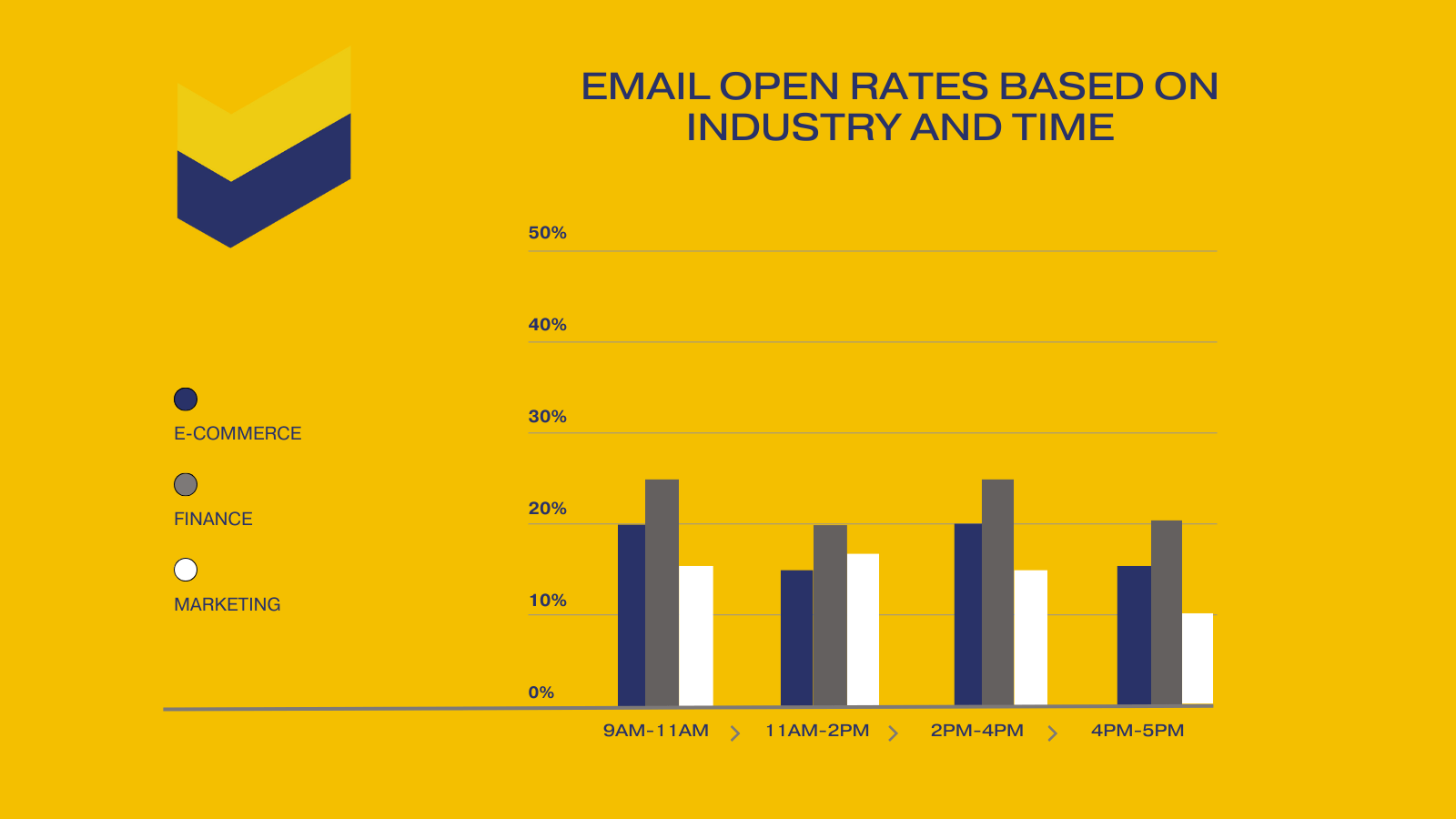
What are the alternatives to using b2b email lists?
While b2b email lists are a powerful tool in the B2B marketer’s arsenal, there are other avenues to explore:
- Social Media Marketing: Platforms like LinkedIn offer a goldmine of B2B marketing opportunities.
- Content Marketing: Offering valuable content can attract potential leads organically.
- Networking: Both online and offline networking can open doors to potential business opportunities.
- Referral Programs: Encourage your current clients to refer others.
- Paid Advertising: Platforms like Google Ads can help you reach a wider audience.
In the end, while b2b email lists offer immense potential, it’s essential to have a holistic approach to B2B marketing, using a mix of strategies for the best results.
FAQs
Can email data lists be used for marketing?
Absolutely! Email data lists, especially those tailored for the B2B sector, are like gold mines for marketers. They offer a direct channel to reach potential business partners, clients, and stakeholders. When used judiciously and ethically, these b2b email lists can supercharge your marketing campaigns, ensuring your messages resonate with the right audience.
Are B2B data lists real-time?
While the ideal scenario would be to have real-time B2B data lists, in reality, most lists are updated periodically. However, at Results Driven Marketing, we prioritise keeping our b2b email databases as fresh and up-to-date as possible, ensuring you always have access to relevant and timely data.
What criteria am I able to search with?
With our comprehensive b2b email databases, you can search based on various criteria, including:
- Industry type
- Company size
- Geographical location
- Job titles
- Technographic data
- And more!
This ensures you can tailor your campaigns to target the most relevant audience.
Are Results Driven Marketing’s B2B data lists GDPR compliant?
Yes, indeed! We take data privacy and regulations very seriously. All our b2b email lists are GDPR compliant, ensuring you can use them with peace of mind, knowing you’re adhering to all relevant regulations.
After purchase, do I own the list?
When you purchase a b2b email list from Results Driven Marketing, you’re granted a license to use the data. This means you can use it for your campaigns, but the ownership remains with the provider. It’s essential to understand the terms of use to ensure compliance.
Are B2B Data Lists the only data solution Results Driven Marketing offers?
While B2B Data Lists are a significant offering, Results Driven Marketing provides a plethora of other data solutions, including data cleansing, data enrichment, and custom data solutions, ensuring you have a holistic approach to your marketing data needs.
What Is B2B Email List?
A B2B email list is a curated collection of email addresses and other relevant details of businesses, decision-makers, and stakeholders in the B2B sector. It’s a tool that marketers use to conduct targeted email marketing campaigns.
How Can B2B Email List Boost Your Business?
A well-segmented B2B email list can:
- Enhance targeted outreach
- Improve engagement rates
- Increase ROI on email marketing campaigns
- Help in building and nurturing business relationships
What Fields Are Available In The B2B Database List?
Our B2B database list is comprehensive, offering fields like:
- Company name
- Contact details
- Industry type
- Company size
- Job titles
- Geographical location
- And more!
What Are The Significant Sources Of B2B Email Lists?
B2B email lists are curated from various sources, including:
- 118 118 Information
- Thomson Directories
- Companies House
- Corp Data
- Dun and Bradstreet
What Fields Are Available In The B2B Email Database?
The B2B email database typically includes:
- Company details
- Contact names
- Email addresses
- Job titles
- Industry type
- And other relevant data
Does The B2B Database Include SIC?
Yes, our B2B database includes Standard Industrial Classification (SIC) codes, helping you further segment and target your campaigns.
How Frequently Are The B2B Email Lists Updated?
At Results Driven Marketing, we prioritise data freshness. Our B2B email lists are updated regularly, ensuring you always have access to the most recent and relevant data.
Can I Get The Sample Records From Your Database?
Certainly! We believe in the quality of our data. If you’re interested in our B2B email databases, we can provide sample records to give you a glimpse of what to expect.
What is a B2B email list?
Why is a live B2B email database crucial?
Because stale data can lead to missed opportunities. Live data ensures you’re always reaching out to active and relevant contacts.
How often should I update my b2b email lists?
Regularly! Industries evolve, and contacts change. Regular updates ensure your list remains fresh and relevant.
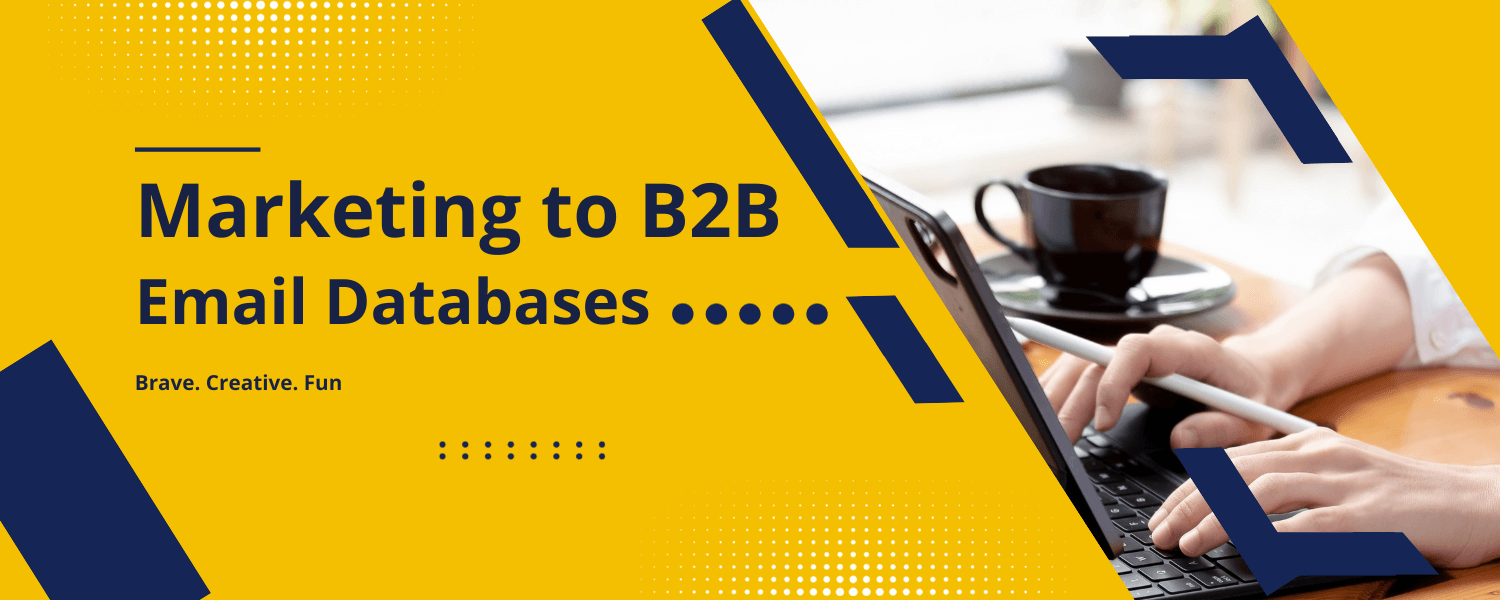
Overcoming the Challenges of Marketing Products and Services to B2B Emails in the UK
In the realm of business-to-business (B2B) marketing, email continues to be a potent tool. However, marketing products and services to B2B emails, particularly B2B emails in the UK, presents its unique set of challenges. This part of article will explore these challenges and provide insights on how to navigate them effectively.
Data Protection and Privacy Laws
The UK has stringent data protection and privacy laws, including the General Data Protection Regulation (GDPR) and the Data Protection Act 2018. These laws regulate how businesses can collect, store, and use personal data, including B2B emails. Non-compliance can result in hefty fines and damage to the company’s reputation. Therefore, marketers need to ensure that their B2B email marketing practices are compliant with these laws.
Deliverability Issues and Email Lists B2B
Another challenge of marketing to B2B emails in the UK is deliverability. Email service providers use sophisticated algorithms to filter out spam, and these algorithms are continually evolving. Marketers need to stay updated on these changes and adjust their email marketing strategies accordingly to ensure their emails reach the inbox.
Engaging Content for Your Email Lists B2B
Creating engaging content for B2B emails in the UK is another significant challenge. B2B buyers are often busy professionals who receive numerous emails daily. To stand out in their inbox, marketers need to create content that is relevant, valuable, and engaging. This requires a deep understanding of the target audience’s needs, interests, and pain points.
Measuring Success From Your B2B Email Lists
Finally, measuring the success of B2B email marketing campaigns can be challenging. Traditional metrics like open rates and click-through rates are important, but they don’t provide a complete picture of the campaign’s effectiveness. Marketers need to track additional metrics like conversion rates and return on investment (ROI) to fully understand the impact of their B2B email marketing efforts.
In conclusion, marketing products and services to B2B emails in the UK is not without its challenges. However, with a deep understanding of the UK market, compliance with data protection laws, strategies to improve deliverability, engaging content, and comprehensive measurement of success, marketers can effectively navigate these challenges and harness the power of B2B email marketing.
Crafting Compelling Value Propositions for B2B Email Lists: A Comprehensive Guide website
In the world of business-to-business (B2B) marketing, the value proposition is king. It’s the core message that differentiates your products or services from the competition and convinces potential customers that you’re the best choice. When promoting products and services to B2B email lists, crafting a compelling value proposition is crucial. This part of article will guide you through the process, with a focus on the keyword “B2B email lists.”
Understand Your Audience
The first step in crafting a compelling value proposition for B2B email lists is understanding your audience. Who are they? What are their needs, challenges, and goals? What are their preferences when it comes to communication and purchasing decisions? The more you know about your audience, the better you can tailor your value proposition to resonate with them.
Identify Your Unique Selling Proposition
Your unique selling proposition (USP) is what sets your products or services apart from the competition. It’s the unique benefit or feature that only you can offer. Identifying your USP is crucial for crafting a compelling value proposition. It’s what will make your products or services stand out in the crowded inboxes of your B2B email lists.
Communicate the Benefits, Not Just Features
When promoting products or services to B2B email lists, it’s important to focus on the benefits, not just the features. Features are the characteristics of your product or service, while benefits are the value that these features provide to the customer. Your value proposition should clearly communicate how your products or services can solve a problem, save time, reduce costs, or otherwise benefit the customer.
Keep It Simple and Clear
A compelling value proposition is simple and clear. It should be easy to understand and communicate the value of your products or services in a concise way. Avoid jargon and complex language that could confuse your audience. Remember, you only have a few seconds to grab the attention of your B2B email lists, so make every word count.
Test and Refine Your Value Proposition
Finally, it’s important to test and refine your value proposition. Use A/B testing to compare different versions of your value proposition and see which one resonates most with your B2B email lists. Use the feedback and data you gather to refine your value proposition and make it even more compelling.
In conclusion, crafting a compelling value proposition for B2B email lists is a multi-step process that involves understanding your audience, identifying your USP, communicating the benefits, keeping it simple and clear, and testing and refining your message. By following these steps, you can create a value proposition that resonates with your B2B email lists and drives engagement and conversions.
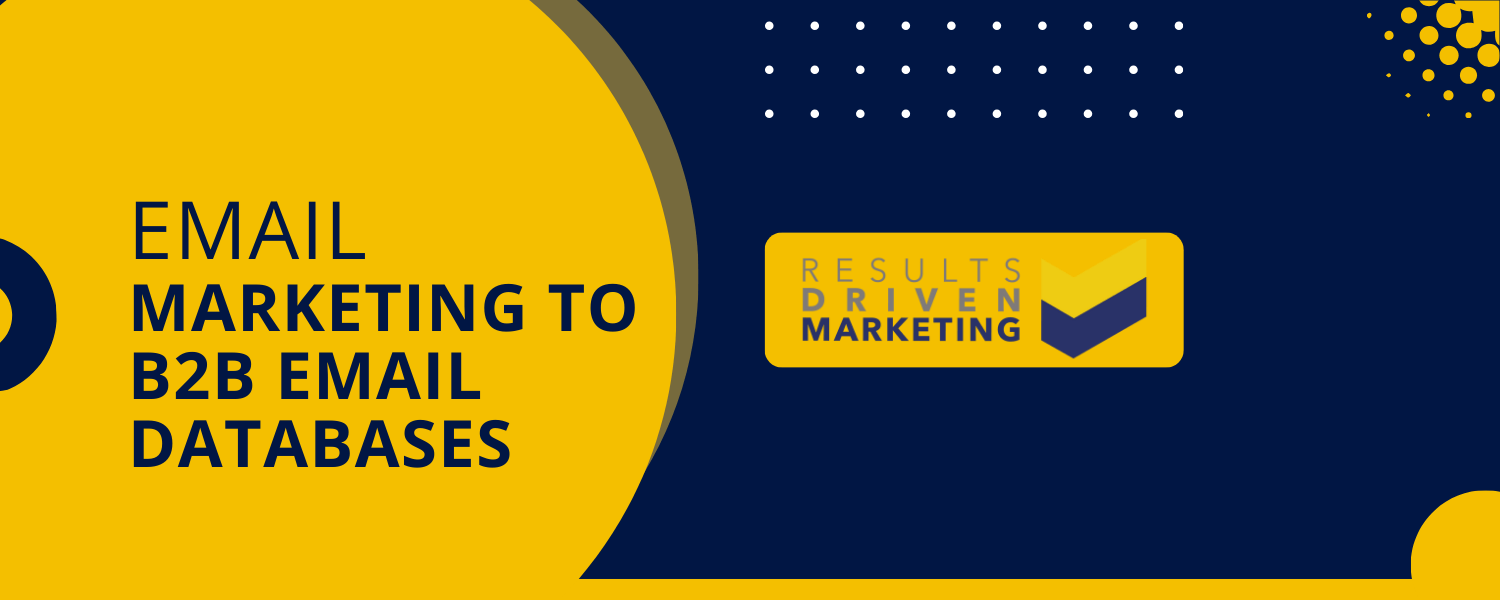
Email Marketing to your B2B Email Databases
What are the Major Benefits of Email Marketing B2B Email Lists?
Email marketing has become an essential part of any business strategy. The effectiveness of this method lies in the fact that it allows businesses to connect with their target audience directly and promote their offerings in a cost-effective way.
One aspect of email marketing that is particularly under utilised is the bought b2b email list. A bought b2b email list is a collection of email addresses that a business can purchase from a third-party provider.
While it may seem like a shortcut to building a customer base, a bought b2b email list has numerous benefits when used correctly.
Targeted Reach
One of the significant advantages of using a bought b2b email list for email marketing is that it provides a targeted reach. This is because the businesses can purchase a list that contains email addresses of individuals who have already shown interest in their industry or product.
So, businesses can rest assured that the emails they send will reach their target audience and the chances of conversions are higher.
Cost-Effective Way to Expand Customer Base
Email marketing is known for its cost-effectiveness. By using a bought b2b email list, businesses can expand their customer base without investing in expensive advertising campaigns.
Since email marketing has impressive ROI, businesses can expect a return on their investment when they use a purchased b2b email list.
Improved Efficiency
Using a purchased b2b email list saves both time and effort for businesses. Instead of spending hours researching potential customers or creating a new b2b email list from scratch, businesses can purchase a list and immediately start reaching out to potential customers with their offerings.
Increased Sales and Conversions from your b2b email list
Finally, the most significant benefit of using a bought b2b email list for email marketing is an increase in sales and conversions.
By sending personalised messages to targeted individuals, businesses can leverage the power of email marketing to convert leads to customers, increase repeat business and create brand loyalty.
In conclusion, using a bought b2b email list can provide businesses with numerous benefits when used correctly. Email marketing is an excellent way to connect with potential customers and using a purchased email list adds value to business efforts to reach the right people easily and inexpensively.

Maximising B2B Engagement: Email Marketing Best Practices for Leveraging B2B Email Data
Email marketing remains a pivotal tool in B2B communication, especially when leveraging B2B email databases to sell products and services. Here are best practices to ensure effectiveness and engagement:
Understand Your Audience
- Segment Your B2B Email Data: Tailor your messages based on segments like industry, company size, or job role. This personalised approach resonates better with your audience.
- Research Needs and Pain Points: Understanding the challenges and needs of businesses in your database allows for more targeted and relevant content.
Craft Compelling Content
- Value-Driven Approach: Your content should educate, inform, or solve a problem, not just sell. Use case studies, whitepapers, and industry insights to add value.
- Clear and Concise Messaging: B2B decision-makers are time-constrained. Keep your emails clear, concise, and to the point.
Subject Lines Matter
- Capture Attention Quickly: The subject line is your first impression. Make it compelling and relevant to prompt opening.
- Avoid Spammy Language: Words like ‘free’, ‘guarantee’, or excessive punctuation can trigger spam filters.
Timing and Frequency
- Optimise Send Times: Test different send times to find when your audience is most likely to engage.
- Respectful Frequency: Don’t overwhelm inboxes. Find a balance that keeps you top of mind without being intrusive.
Mobile Optimisation
- Responsive Design: With increasing email access on mobile devices, ensure your emails render well across devices.
- Test Across Platforms: Check how your email looks in different email clients and devices.
Call to Action (CTA)
- Clear CTA: Every email should have a clear call to action, guiding recipients on the next steps.
- A/B Testing: Experiment with different CTA texts, colours, and placements to see what works best.
Leverage Analytics
- Track Key Metrics: Open rates, click-through rates, and conversion rates can provide insights into what works and what doesn’t.
- Continuous Improvement: Use data to refine your strategy, content, and segmentation continuously.
Compliance and Privacy
- Adhere to Regulations: Follow laws like GDPR and CAN-SPAM Act to respect privacy and avoid legal issues.
- Permission-Based Marketing: Ensure your B2B email data comprises contacts who have opted in to receive your communications.
Integration with Other Channels
- Multi-Channel Approach: Integrate email marketing with social media, content marketing, and other channels for a cohesive strategy.
- Consistent Branding: Ensure your email campaigns align with your overall brand message and visual identity.
Personalisation and Automation
- Use Personalisation: Address recipients by name, and reference their specific interests or past interactions.
- Automate for Efficiency: Use marketing automation tools to send triggered emails based on specific actions or time intervals.
Conclusion
Effective use of B2B email data in email marketing requires a strategic approach focused on understanding your audience, delivering valuable content, optimising for engagement, and respecting privacy and compliance standards. By following these best practices, businesses can enhance their email marketing campaigns, ensuring they effectively reach and resonate with their B2B audience.
Mastering A/B Split Testing in Email Marketing for B2B Audiences
In the realm of B2B marketing, email campaigns remain a cornerstone for success. However, to truly capitalise on email lists B2B, it’s essential to harness the power of A/B split testing. This process allows marketers to fine-tune their strategies, ensuring maximum engagement and conversion. Here’s how to effectively implement A/B split testing in your B2B email marketing campaigns:
Understanding A/B Split Testing
A/B split testing, or split testing, is the process of sending two slightly different versions of an email to a segment of your email list to see which performs better. This empirical approach can significantly enhance the effectiveness of your email campaigns.
Define Your Goals
Before launching a test, clearly define what you want to achieve. Whether it’s increasing open rates, click-through rates, or direct conversions, your goal will guide the elements you choose to test.
Segment Your B2B Email List
Segment your email lists B2B to ensure you’re testing within a relevant audience. Segmentation can be based on demographics, past purchasing behavior, engagement level, or industry type.
Choose One Variable to Test
Focus on one variable at a time to accurately measure its impact. This could be the email’s subject line, content, call-to-action (CTA), layout, or sending time.
Subject Line
Experiment with different tones, lengths, and styles to see what prompts more opens.
Email Content
Test different types of content like text-heavy vs. image-heavy emails, different tones of voice, or varying lengths.
Call-to-Action
Alter the wording, colour, or placement of your CTA to see which drives more clicks.
Layout and Design
Try different email templates to see which layout yields better engagement.
Sending Time
Test different days of the week and times of the day to optimise open rates.
Create Your Variants
Based on the variable you choose, create two versions of your email – Version A (control) and Version B (variation). Ensure that the difference between the two is clear yet subtle enough to attribute any change in performance directly to that change.
Test Your Emails
Send each version to a similarly sized, random segment of your B2B email list. It’s crucial that the sample size is large enough to provide statistically significant results.
Analyse the Results
After your campaign has run, analyse the data. Use metrics relevant to your initial goal to determine which version performed better.
Implement and Iterate
Implement the winning elements into your future campaigns. However, don’t stop there. Continuous testing is key to evolving with your audience’s preferences and market trends.
Understand the Limitations
While A/B testing is powerful, it has limitations. It can’t capture long-term behavior changes or broader market shifts. Therefore, it should be one tool among many in your marketing toolkit.
Conclusion
A/B split testing is an invaluable method for maximising the potential of email lists B2B. By methodically testing and refining your email campaigns, you can significantly improve their effectiveness, leading to better engagement, stronger relationships, and increased sales in the B2B sphere. Remember, the key to successful email marketing lies in understanding your audience and continually adapting your strategy to meet their evolving needs.
Measuring the Success of Email Marketing to B2B Email Lists
In the realm of B2B marketing, email campaigns targeted at B2B email lists are a cornerstone strategy. Measuring the effectiveness of these campaigns is crucial for understanding their impact and refining future strategies. This article explores key metrics and methods to effectively gauge the results of email marketing campaigns aimed at B2B audiences.
Open Rate
- Indicator of Engagement: The open rate measures the percentage of recipients who opened your email. It’s a primary indicator of how well your subject line performs and how engaged your B2B email list is.
- Benchmarking Success: Compare your open rates against industry averages to gauge the relative success of your campaign.
Click-Through Rate (CTR)
- Assessing Interest: CTR tracks the percentage of email recipients who clicked on one or more links contained in your email. It’s a direct measure of the level of interest your content generates.
- Actionable Insights: Analysing which links were clicked and how many times can provide insights into what content or offers are most appealing to your B2B audience.
Conversion Rate
- Measuring Effectiveness: The conversion rate indicates how many recipients took the desired action after clicking a link in the email. This could be filling out a form, downloading a resource, or making a purchase.
- Align with Objectives: The definition of ‘conversion’ varies, so align this metric with your specific campaign objectives to measure true effectiveness.
Bounce Rate
- Email List Health: The bounce rate, the percentage of emails that couldn’t be delivered, is crucial for assessing the health of your B2B email lists. High bounce rates may indicate outdated or inaccurate email addresses.
- List Maintenance: Regularly clean your email list to reduce bounce rates and improve overall campaign performance.
Unsubscribe Rate
- Feedback Loop: While no one likes to see unsubscribes, this metric provides feedback on how relevant and engaging your content is to your audience.
- Healthy Churn: A certain level of unsubscribes is normal and can help maintain a more engaged, high-quality email list over time.
Email Sharing/Forwarding Rate
- Extended Reach: This metric tracks how often your email is shared or forwarded, extending your content’s reach beyond your initial B2B email list.
- Viral Potential: High sharing rates can indicate content with viral potential or strong appeal, providing insights for future content creation.
ROI (Return on Investment)
- Direct Financial Impact: ROI measures the direct financial return from your email marketing efforts. Calculate ROI by comparing the revenue generated from your campaign against the costs incurred.
- Long-Term Analysis: Consider both immediate and long-term revenue generated, especially for B2B campaigns where sales cycles can be longer.
Engagement Over Time
- Sustained Interest: Track how engagement with your emails changes over time. This helps in understanding the lifespan of your content and optimising the timing of your email campaigns.
- Lifecycle Management: Use this data for segmenting your B2B email lists based on engagement levels, tailoring content to different lifecycle stages.
Website Traffic
- Directing Online Behavior: Monitor how email campaigns affect your website traffic. Increased visits, particularly to targeted pages, can be a strong indicator of campaign effectiveness.
- Integrating Analytics: Use tools like Google Analytics to track the behaviour of visitors coming from your email campaigns for a comprehensive understanding of their online journey.
Customer Feedback and Surveys
- Qualitative Insights: Beyond quantitative metrics, gathering direct feedback from recipients can provide valuable insights into their preferences and perceptions.
- Iterative Improvement: Use this feedback to refine your email content, design, and overall strategy for future campaigns.
In conclusion, effectively measuring the results of email marketing campaigns to B2B email lists involves a blend of quantitative and qualitative analysis. By closely monitoring these key metrics, businesses can gain a deeper understanding of their audience’s behaviour and preferences, leading to more refined, effective, and successful email marketing strategies.
As the digital landscape evolves, staying attuned to these measurements is vital for maintaining a competitive edge in B2B marketing.
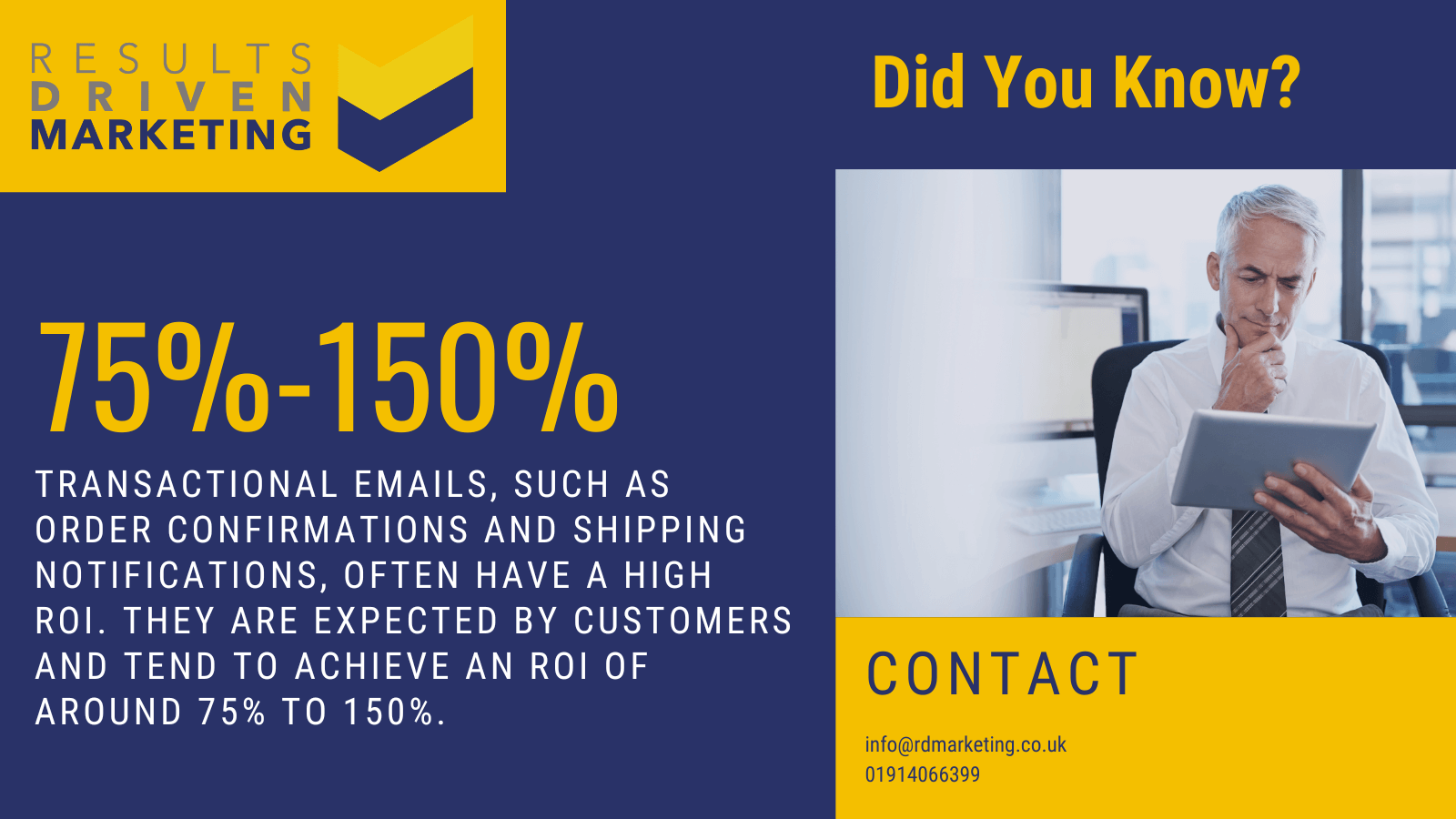
Crafting Effective Call to Actions in B2B Email Marketing: Leveraging B2B Email Databases
In the digital marketing landscape, especially in the B2B sector, the importance of a well-crafted call to action (CTA) in email marketing cannot be overstated. For businesses utilising B2B email databases,
CTAs are the pivotal elements that drive recipients towards a desired action, be it signing up for a webinar, downloading a whitepaper, or making a purchase. Here’s a comprehensive guide on how to create compelling CTAs for your B2B email marketing campaigns:
Understanding the Significance of CTAs in B2B Email Marketing
CTAs in B2B email marketing serve as the bridge between content and action. They are the key to converting email recipients from your B2B email databases into engaged prospects and, ultimately, loyal customers.
Know Your Audience
- Segment Your B2B Email Database: Tailor CTAs based on the segment of the B2B email database you’re targeting. Different segments may have different needs and pain points.
- Understand Their Journey: Recognise where your audience is in the sales funnel. A CTA for a first-time recipient should be different from one targeting a long-time subscriber.
Clarity is Key
- Be Specific and Direct: Your CTA should clearly state what you want the recipient to do. Avoid vague language; be precise about the action you desire.
- Use Action-Oriented Verbs: Start your CTA with verbs like ‘Download’, ‘Register’, ‘Subscribe’, or ‘Learn More’ to prompt immediate action.
Create a Sense of Urgency
- Limited Time Offers: Use phrases like ‘Offer ends soon’ or ‘Limited spots available’ to create a sense of urgency.
- FOMO (Fear of Missing Out): Highlight the exclusivity or limited nature of what you’re offering.
Value Proposition
- Communicate Benefits: Clearly state what’s in it for them. Instead of saying “Buy now”, say “Improve your efficiency by buying now”.
- Align with Your Content: Ensure your CTA aligns with the content of the email. If the email is about a product update, the CTA should relate directly to that update.
Design Matters
- Stand Out Visually: Your CTA should visually stand out from the rest of the email. Use colors that contrast yet complement your brand palette.
- Strategic Placement: Place your CTA where it’s easily visible. This could be at the end of a compelling message or at strategic points in longer emails.
A/B Testing
- Test and Optimise: Conduct A/B testing on different elements of your CTA, like wording, color, size, and placement to see what resonates best with your audience.
Follow Up
- Automate Follow-Up Emails: For those who didn’t respond, a well-timed follow-up email can be the nudge they need.
Monitor and Analyse
- Track Performance: Use analytics to track how your CTAs are performing. Look at click-through rates and conversions to measure effectiveness.
Conclusion
Crafting effective CTAs in B2B email marketing is a blend of art and science. By understanding your audience, communicating a clear and urgent message, ensuring visual appeal, and continually testing and refining your approach, you can significantly enhance the impact of your campaigns.
A well-crafted CTA can transform your B2B email database from a list of contacts into a dynamic tool for generating leads, building relationships, and driving sales.
Perfecting the Art of Email Subject Lines for Your B2B Email Databases: Engaging UK Businesses
Mastering the art of email marketing involves more than just creating engaging content and having a comprehensive B2B email database. One of the most crucial components of your email strategy is the subject line. It’s the first thing that your recipients see, and it can be a deciding factor between an opened email and one that’s ignored or deleted. When dealing with UK businesses, creating compelling subject lines becomes all the more crucial to cut through the clutter and grab their attention.
The Importance of Email Subject Lines and your B2B Email Data
The subject line is like the headline of your email. It serves as a preview and sets the tone for what’s inside the email. A well-crafted subject line can spark interest, invoke curiosity, and urge recipients to open your email. Conversely, a poorly constructed subject line can doom your email to the trash bin, no matter how great your content might be.
Steps to Crafting Compelling Subject Lines for Your B2B Email Databases
Keep it Concise and Clear: Your subject line should be a succinct summary of your email’s content. Aim to keep it under 60 characters to ensure it’s fully visible in most email inboxes.
Personalise content to your B2B email data: Adding a personal touch to your subject lines, such as the recipient’s name or their company name, can increase engagement rates.
Create a Sense of Urgency or FOMO: Encourage your readers to act quickly by creating a sense of urgency or fear of missing out (FOMO). Phrases such as ‘Limited Time Offer’ or ‘Ends Today’ can be highly effective.
Use Action-Oriented Language: Verbs in your subject line can inspire action and get your readers to open the email.
Test Your Subject Lines: Always A/B test your subject lines to find out what works best with your audience. Test different elements such as length, personalisation, or tone to gain insights into your recipients’ preferences.
Avoid Spammy Phrases: Avoid words and phrases that could trigger spam filters. Words like ‘free’, ‘guarantee’, ‘no obligation’ are often linked to spam emails and could get your emails sent straight to the spam folder.
Conclusion
Creating compelling subject lines is not just an art but also a science. It requires creativity, an understanding of your audience, and continuous testing and optimisation.
By following these steps, you can create captivating subject lines that encourage UK businesses in your B2B email databases to engage with your emails, leading to improved open rates, click-through rates, and overall campaign success.

Navigating Email Marketing ROI: A Comprehensive Guide for B2B Email Data
In today’s digital landscape, email marketing remains a robust tool for reaching and engaging your target audience. However, understanding how to calculate the return on investment (ROI) of your email marketing efforts, especially when targeting UK businesses, is crucial for assessing the efficacy of your campaigns and strategising future marketing endeavours. This part of article provides a step-by-step guide on calculating email marketing ROI using your B2B email data.
How to Calculate Email Marketing ROI
Identify Your Costs: The first step in calculating ROI is to tally all the costs associated with your email marketing campaign. This can include costs for creating content, employing marketing personnel, purchasing or maintaining email software, and acquiring B2B email data.
Determine Your Revenue: This refers to the money generated as a direct result of your email marketing campaign. This can be tracked through analytics tools which trace a customer’s journey from the email to the final purchase.
Calculate ROI: The formula for ROI is [(Revenue – Cost) / Cost] * 100%. The result is the ROI of your email marketing campaign, expressed as a percentage.
Improving ROI Using Your B2B Email Data
Segment Your Audience: Segmenting your B2B email data allows you to personalise your campaigns and target specific groups within your audience, potentially leading to higher engagement and conversion rates.
A/B Testing: Conduct A/B tests to determine what type of content, subject lines, and calls-to-action your audience responds best to.
Monitor and Adjust: Keep a close eye on your campaign metrics. If something isn’t working, don’t hesitate to adjust your strategy. Remember, ROI isn’t a ‘set it and forget it’ metric.
Conclusion
Calculating email marketing ROI when marketing to UK businesses is a critical process that should be incorporated into any email marketing strategy. It provides invaluable insights into the performance of your campaigns and the quality of your B2B email data, and informs strategic decisions for future marketing efforts.
Remember, improving ROI isn’t just about increasing revenue; it’s equally important to manage and reduce costs where possible. With careful calculation and strategic planning, you can maximise your email marketing ROI and drive business growth.

Integrating Email Marketing with Other Channels: A Guide for Businesses Targeting B2B Data Providers in the UK
Integrating Email with Social Media
One of the most effective ways to integrate your email marketing campaigns with other channels is by linking them with your social media efforts. For example, you could use your email newsletter to highlight your latest social media posts, or use your social media profiles to encourage followers to sign up for your b2b email list. This not only increases your reach but also provides multiple touch points for engagement with B2B data providers in the UK.
Integrating Email with Your Website
Your website is another crucial channel to integrate with your email marketing. For instance, you could use email marketing to drive traffic to specific pages on your website, such as new product pages or blog posts. Conversely, you could use your website to encourage visitors to sign up for your b2b email list, providing a steady stream of new potential customers.
Integrating Email with Offline Marketing
Even in today’s digital age, offline marketing remains important. Consider how you can link your email marketing with your offline efforts. For example, you could use email to follow up on leads generated at trade shows or networking events, or use offline marketing materials to encourage people to sign up for your b2b email list.
Testing and Refining
Finally, remember that integrating your email marketing with other channels is an ongoing process. Test different strategies, track the results, and refine your approach based on what works best. What works for one segment of B2B data providers in the UK may not work for another, so be prepared to adapt your approach as needed.
Conclusion
Integrating your email marketing campaigns with other marketing channels is crucial for businesses targeting B2B data providers in the UK. By understanding multi-channel marketing, linking your email marketing with your social media, website, and offline efforts, and testing and refining your approach, you can create a seamless, integrated marketing strategy that drives results.
Crafting Compelling Value Propositions for B2B Email Lists
In the competitive world of business-to-business (B2B) marketing, standing out from the crowd is essential. One of the most effective ways to do this is by crafting a compelling value proposition. This is especially crucial when promoting products and services like B2B email lists, which are sought after by many companies looking to expand their reach and clientele. In this article, we’ll delve into the art of creating a persuasive value proposition for your B2B email lists.
Understand Your Target Audience
Before you can craft a value proposition, you need to have a deep understanding of your target audience. What are their pain points? What challenges are they facing? What are their goals? By understanding these aspects, you can tailor your B2B email lists to address their specific needs.
Highlight the Unique Benefits
There are likely many providers offering B2B email lists. What makes yours stand out? Is it the accuracy of the data? The segmentation options? The size of the list? Highlight these unique benefits in your value proposition to differentiate yourself from competitors.
Showcase Tangible Results
Businesses are results-driven. If you can showcase tangible results that other clients have achieved using your B2B email lists, you’ll be more persuasive. This could be in the form of case studies, testimonials, or specific metrics that demonstrate the effectiveness of your lists.
Keep It Simple and Clear
Your value proposition should be concise and to the point. Avoid jargon and complex language. The goal is to convey the value of your B2B email lists quickly and clearly so that potential clients can immediately understand the benefits.
Address Potential Objections
Anticipate any objections or concerns your target audience might have about purchasing B2B email lists. Address these proactively in your value proposition. For instance, if a common concern is about the freshness of the data, highlight how frequently your lists are updated.
Offer Guarantees
If you’re confident in the quality of your B2B email lists, consider offering guarantees. This could be a satisfaction guarantee or a guarantee about the accuracy of the data. Such guarantees can instill confidence in potential clients and make your offer more compelling.
Emphasise Customer Support
After-sales support can be a significant differentiator. Emphasise any support or training you offer to clients after they purchase your B2B email lists. This not only adds value but also builds trust with potential clients.
Conclusion
Crafting a compelling value proposition for B2B email lists requires a deep understanding of your target audience, a clear differentiation strategy, and a focus on tangible results. By following the steps outlined above, you can create a value proposition that resonates with potential clients and drives sales. Remember, in the world of B2B marketing, it’s not just about having a great product or service; it’s about effectively communicating its value.

The Art of Crafting Compelling Subject Lines for Your B2B Email Databases
Hey there, email aficionados! You’ve got a stellar B2B email database, and you’re ready to send out some fantastic content. But there’s a catch: you need a killer subject line to get your audience to actually open and read that email. Never fear, we’re here to dive into some tried-and-true tactics for writing irresistible subject lines.
Keep it Short and Sweet for Your B2B Email Lists
Did you know that about 46% of emails are opened on mobile devices? That’s a lot of tiny screens! To avoid having your subject line cut off, aim for about 50 characters or less. Be concise, but pack a punch.
Personalisation is Key When Talking to Your B2B Email Lists
Everyone loves the sound of their own name, and your B2B email databases are no exception. Using personalisation tokens in your email subject line, like a recipient’s first name or company name, can make your email stand out in a crowded inbox.
Create a Sense of Urgency Within Your B2B Email Databases
People hate missing out. By creating a sense of urgency or scarcity in your subject line, like “Only 3 spots left in our webinar!” or “Sale ends today!”, you can encourage your recipients to open your email right away.
Be Clear and Direct When Communicating With Your B2B Email Databases
While clever puns and wordplay can be fun, they can also be confusing. Especially when targeting B2B email databases, where time is often of the essence, clarity is king. Make sure your subject line clearly communicates what your email is about.
Ask a Question of Your B2B Email Databases
Posing a question can pique curiosity and prompt an open. Make sure your question relates to a problem or need your recipient has, like “Need to boost your SEO rankings?” or “Looking for cost-effective marketing solutions?”.
Include Numbers to Engage Your B2B Email Lists
Numerals stand out in a sea of text. Whether it’s a percentage (“Boost your sales by 30%”) or a list (“5 ways to improve your email marketing”), numbers can make your subject line more enticing.
A/B Test Your Subject Lines on your B2B Email Databases
Last but not least, always test your subject lines. What works for one segment of your B2B email databases may not work for another. Try out different strategies and see what gets you the best open rates.
Remember, your subject line is your first (and sometimes only) chance to make an impression. Don’t let it be an afterthought! Take the time to craft a compelling subject line that will get your emails the attention they deserve from your B2B email databases. Happy writing!
Crunching the Numbers: How to Calculate ROI of Email Marketing Campaigns for Email Lists B2B
Let’s talk about everyone’s favourite three-letter acronym in the business world – ROI, or Return on Investment. When you’re managing email marketing campaigns, particularly for B2B communication, understanding ROI is crucial to measure success and justify future investment. So, whether you’re a numbers ninja or a bit math-shy, we’re here to break it down for you!

ROI is a straightforward yet powerful metric that tells you how much revenue you’re generating for every dollar you spend on your campaigns. If you’re reaching out to your email lists B2B, this is a calculation you can’t afford to skip. Let’s dive into the steps:
Identify Your Costs (Investment)
In the first part of your ROI equation, you need to calculate your total investment. This includes all the costs associated with your email marketing campaign. This can involve the cost of email marketing software, content creation, design, acquisition of your email lists B2B, and more.
Calculate Your Returns (Profit)
Next, you need to determine your returns. This is the revenue generated from your email marketing campaign. Remember to only include the income that came directly from your campaign. Use tracking links and unique discount codes to ensure accurate tracking.
Use the ROI Formula
Once you have your costs (investment) and returns (profit), plug them into the ROI formula:
ROI (%) = [(Profit – Investment) / Investment] * 100
For instance, if you spent £1000 on your campaign and made £5000 in sales, your ROI would be [(5000-1000) / 1000] * 100 = 400%. This means that for every dollar spent, you received four dollars back.
Analyse and Optimise
ROI should never be a static number. You should continuously monitor, analyse, and optimise your campaigns for the best results.
If you find your ROI isn’t where you’d like it to be, don’t worry! Testing different elements of your email – such as the subject line, body copy, call-to-action, or sending time – can yield significant improvements. And remember to segment your email lists B2B for more personalised, relevant messaging to your B2B Email Databases.
Understanding and calculating ROI is more than just a number-crunching exercise. It’s about discovering what works and what doesn’t in your email campaigns. It gives you insights to refine your strategies, justifying the investment to stakeholders, and ensuring that your efforts to engage your email lists B2B are indeed fruitful.
So, start calculating your ROI today. It may just be the key to unlocking your next level of email marketing success.

Segmenting B2B Email Lists: A Guide for Maximum Response Rates
In the realm of B2B marketing, email remains a powerful tool for reaching potential clients and partners. However, the effectiveness of your email campaigns largely depends on how well you segment your email lists.
Proper segmentation ensures that your messages resonate with the recipients, leading to higher open rates, engagement, and conversions. Email list providers often emphasise the importance of segmentation, and for a good reason. Here’s a guide on how to segment your B2B email lists for maximum response rates.
Understand the Role of Email List Providers
Before diving into segmentation, it’s essential to understand the role of email list providers. These providers offer curated lists of potential business contacts, often categorised based on various criteria. By leveraging the services of reputable email list providers, you can obtain a list that’s already pre-segmented to some extent, giving you a head start.
Segment by Industry or Sector
Different industries have unique needs, challenges, and jargon. By segmenting your email list based on industry or sector, you can tailor your messaging to address specific pain points or opportunities relevant to each industry.
Segment by Company Size
A startup has different needs and challenges compared to a multinational corporation. Segmenting your list based on company size allows you to customise your offerings and solutions according to the scale and capabilities of each business.
Segment by Job Role or Title
Decision-makers, managers, and executives might have different priorities. By segmenting your list based on job roles or titles, you can ensure that your message reaches the right person with the authority to make purchasing decisions.
Segment Based on Past Engagement
Monitor how recipients engage with your emails. Segmenting your list based on past engagement, such as those who opened previous emails, clicked on links, or made a purchase, can help you identify warm leads and tailor follow-up campaigns.
Segment by Sales Cycle Stage
Not all businesses on your list will be at the same stage in the sales cycle. Some might be in the awareness stage, while others are ready to make a purchase. Tailor your content based on where they are in the buying journey.
Geographic Segmentation
Even in the B2B space, location can play a crucial role, especially if your product or service has regional implications. Segmenting by geography allows for localised offers, event invitations, or region-specific content.
Segment by Purchase History
For businesses that have previously purchased from you, segmenting based on their purchase history can be effective. This allows for upselling, cross-selling, or introducing new products that align with their past interests.
Behavioural Segmentation
This involves segmenting based on specific actions taken by businesses, such as attending a webinar, downloading a white paper, or visiting a particular page on your website.
Feedback and Survey Responses
If you’ve conducted surveys or gathered feedback, use this data to segment your list. Businesses that have provided feedback might be more engaged and open to further communication.
Conclusion
Segmentation is a powerful strategy to enhance the effectiveness of your B2B email campaigns. By understanding the nuances of your audience and tailoring your messages accordingly, you can significantly boost response rates. And while segmentation might seem daunting initially, partnering with reputable email list providers can simplify the process, providing you with a solid foundation to build upon.
Remember, in the world of B2B email marketing, relevance is key, and segmentation is the pathway to achieving it.
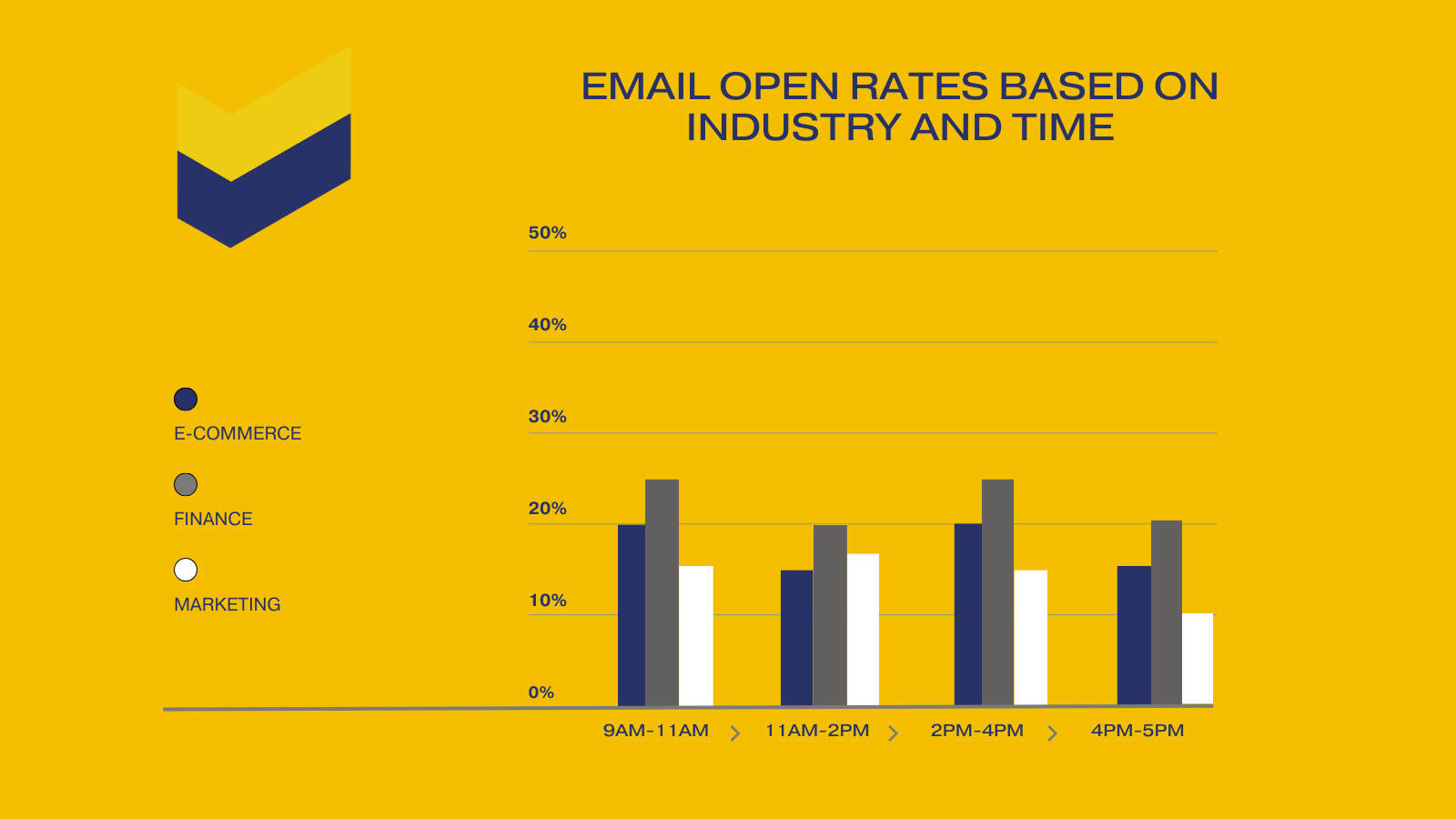
Integrating Email Marketing with Other Channels: A B2B Email List Guide
In the dynamic landscape of B2B marketing, a multi-channel approach is essential for reaching potential clients and partners effectively. While email marketing remains a cornerstone for B2B communication, integrating it with other marketing channels can amplify its impact. For businesses leveraging a B2B email list, this integration can be the key to unlocking maximum ROI. Here’s a guide on how to seamlessly integrate email marketing campaigns with other marketing channels.
Understand the Power of a B2B Email List
A well-curated B2B email list is a goldmine for marketers. It offers direct access to decision-makers, influencers, and potential partners in various industries. However, to fully harness its power, it’s essential to integrate email campaigns with other marketing touchpoints, ensuring a consistent and reinforced message across all platforms.
Integrate with Social Media
- Retargeting Ads: If a recipient opens your email but doesn’t convert, use retargeting ads on platforms like LinkedIn or Facebook to remind them of your offer.
- Shareable Content: Include social sharing buttons in your emails. If the content is valuable, recipients might share it on their social channels, increasing its reach.
Sync with Content Marketing
- Blog Posts: If you’re promoting a product or service in your email, link to a relevant blog post that offers in-depth information.
- Webinars and eBooks: Promote upcoming webinars or newly released eBooks in your emails, driving traffic to your website or landing page.
Coordinate with SEO and PPC
- Keyword Consistency: Ensure that the keywords you’re targeting in your PPC campaigns and SEO efforts are consistent with the content of your emails. This creates a unified message across search and email.
- Landing Pages: Design dedicated landing pages for your email campaigns. Optimise these pages for search to capture organic traffic as well.
Seamless CRM Integration
- Lead Scoring: Integrate your email platform with your CRM. Track interactions and engagement from your B2B email list to score leads and prioritise follow-ups.
- Personalisation: Use CRM data to personalise email content based on past interactions, purchase history, or preferences.
Connect with Offline Events
- Event Promotion: If you’re hosting or attending a trade show, webinar, or any other event, use your B2B email list to send out invitations or updates.
- Follow-ups: After the event, send a follow-up email to attendees, recapping the highlights or offering additional resources.
Collaborate with Affiliate or Partner Marketing
- Cross-Promotions: Collaborate with partners to cross-promote offers or content. This can expand the reach of your email campaigns to a new audience.
- Exclusive Offers: Provide exclusive offers or discounts for products/services of partner companies to your B2B email list, adding value to your emails.
Integrate with Mobile Marketing
- SMS and Push Notifications: For time-sensitive offers or reminders, consider sending an SMS or push notification to complement your email.
- Mobile-Optimised Emails: Ensure your emails are mobile-friendly. With many professionals accessing emails on the go, mobile optimisation is crucial.
Conclusion
In the world of B2B marketing, no channel operates in isolation. By integrating your email campaigns derived from a B2B email list with other marketing channels, you create a cohesive, multi-touchpoint strategy that can significantly enhance engagement and conversions. Remember, it’s all about delivering the right message, at the right time, through the right channel.
Integrated marketing ensures that your message resonates, regardless of where your audience encounters it.
Remember, it’s not just about sending emails; it’s about sending the right emails to the right people and then measuring the impact of those efforts.
In conclusion, navigating the world of B2B mailing lists in 2023 is a journey that requires careful consideration and informed decision-making. The key to success lies in asking the right questions to potential B2B email list providers.
By understanding the nuances of list ownership, data sources, GDPR compliance, accuracy guarantees, and the specific processes used to tailor the data to your needs, you can ensure that the B2B mailing lists you acquire are not only high-quality but also perfectly aligned with your marketing objectives.
Remember, the right B2B email list can significantly amplify your marketing efforts, leading to enhanced customer relationships, expanded reach, and ultimately, a stronger bottom line. Choose wisely, and let your B2B email marketing strategy propel your business to new heights.
Who are We?
Dedicated to lead generation, Results Driven Marketing provides myriad services SMEs can trust to deliver results.
Our marketing lists are guaranteed accurate to industry high standards, and GDPR compliant and our experience team means that if you are looking to buy data, they make them totally bespoke and highly relevant whether you are looking for email lists, direct mailing lists , international data or telemarketing lists
Our email marketing software is highly rated. Responder provides the automation tools you need to put your marketing on autopilot.
We also supply email marketing solutions with our email marketing platform.
Have a look a what our happy clients have to say about us on our testimonials page
Call us today on 0191 406 6399 to discuss your specific needs.
Results Driven Marketing
info@rdmarketing.co.uk
Contact Us
0191 406 6399





